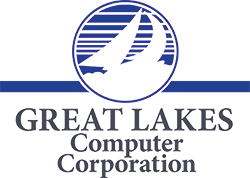 Since the takeoff of the Information Age in the 1990s, you’ve probably heard the words “data backup” preached at you time and again. And for good reason. You don’t want to lose all your valuable data that you spent years developing and accumulating in an unexpected disaster.
Since the takeoff of the Information Age in the 1990s, you’ve probably heard the words “data backup” preached at you time and again. And for good reason. You don’t want to lose all your valuable data that you spent years developing and accumulating in an unexpected disaster.
Today, backing up your data is a little more complex because best practices have changed over the past 20 years. But because you’re so busy, it’s easiest to follow a quick set of rules.
Here are some backup tips for the time-strapped small business owner:
-
- Have a Plan: “Failing to plan is planning to fail.” You don’t need to have a complex plan, but you should have one. You’ll also want to have a data restoration plan in place, as users cannot access a database when it’s being restored. What are you going to do if you lose the primary version of your data? The answer to this question will prepare you for the worst-case scenario.
- Backup Offsite: You can back up your data to either the cloud, or another physical offsite location. The cloud works well, but it does have a subscription cost, and you must have online access. If you backup your data to another offsite location under your ownership, there’s no subscription cost and you don’t need online access to get to it.
- Develop a Routine: In most cases, you should back up your data daily. You can setup your backup program to create backups automatically, so it won’t be too much of a hassle in your daily operations. This could be overkill for some businesses, but it’s also better to be safe than sorry.
- Test Your Backup: Unfortunately, as great as technology is, it throws you surprises sometimes. In the case of backing up your data, you don’t want to be surprised. So test out your backup by restoring your data. You should test large volumes of data weekly, and an entire backup every 6 months.
- Have 2 Separate Backups of Your Data: This sounds a little confusing at first, but it’s very important for data security and backup. So, you’ll have an original copy of your data. Then, you’ll back it up at your server onsite. In addition to that, you should have a backup to a location far away, just in case you get caught in a large disaster, like a tornado, flood, fire, hurricane, or earthquake.
A large enough local disaster could destroy both your original data and onsite backup. With one backup far offsite, you almost eliminate your chances of losing all of your data.
That’s backup 101 for you, and if you follow that advice, you should be safe in the event of any kind of emergency.
Learn more about the author Bob Martin

